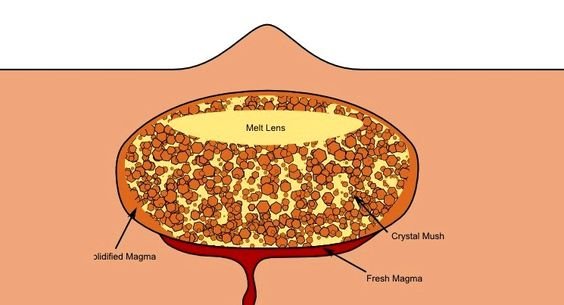Colossal Tuft of Magma Swelling Against Antarctica !

Just Envision floating over Antarctica's frosty region. A white landmass reaches out beneath you, and it's covered in enough solidified water to suffocate each coastline on the planet in a 216-foot (66 meters) wave if it somehow happened to soften. However, researchers now trust that, far below very nearly 1.2 miles (2 kilometers) of ice and a moderately thin cut of rough outside, one district of the solidified landmass conceals a segment of scorching magma, stressing toward the surface, as indicated by another examination.
For the most part, magma nears the surface just at the edges of structural plates. What's more, West Antarctica's Marie Byrd Land, where the tuft is suspected to exist, is a long way from any such fringe areas. In any case, there are puts on the planet where magma comes to toward the surface a long way from any structural outskirt districts, NASA researchers said in a Nov. 7 articulation. Yellowstone National Park is one. Hawaii is another. All that magma pushes against the hull in those parts of the world, making it swell and drawing heat up through the ground.
That warmth offered researchers the principal signs that the Antarctic crest exists.
In spite of its obvious cold stillness, Antarctica is bursting at the seams with movement. Immense masses of solidified water slip, slide and crush with huge weight against the landmass beneath, their consistent movement greased up by a mind boggling arrangement of streams and lakes underneath the ice.
Be that as it may, in Marie Byrd Land, analysts found considerably a greater amount of that action than the known provincial warmth sources could clarify. Something different was cooking the ice rack. Around 30 years prior, scientists initially started to speculate that a magma tuft may be the reason, given the domed state of the hull here.
Presently, researchers know without a doubt.
Study analysts Hélène Seroussi and Erik Ivins of NASA's Jet Propulsion Laboratory fabricated a model of all the known softening and solidifying under the ice in the district. Analysts don't have tests under the ice, yet they can recognize the movement on account of cautious estimations of the ascent and fall of the surface from NASA's ICESat satellite and IceBridge flyover missions.
Their model affirmed the presence of a magma crest pumping around 150 milliwatts for every square meter (or around 11 square feet) of warmth up to the surface, and topping at as much as 180 milliwatts for each square meter in a locale where a break in the covering may exist. (A milliwatt is one-thousandth of a watt.) For correlation, a regular extend of land in the United States gets around 40 to 60 milliwatts for every square meter of geothermal warmth, and Yellowstone gets around 200 milliwatts for each square meter.
This magma crest isn't an option conceivable reason for late upticks in liquefying along the West Antarctic Ice Sheet ascribed to human-created environmental change. The tuft is far more seasoned than the current time of air warming; in fact, at 50 million to 110 million years of age, it's more established than our species and the West Antarctic Ice Sheet itself. The tuft has been a factor in the ice sheet's conduct all through its history, and late surges in softening are the aftereffect of all the extra warmth people have drawn into it.